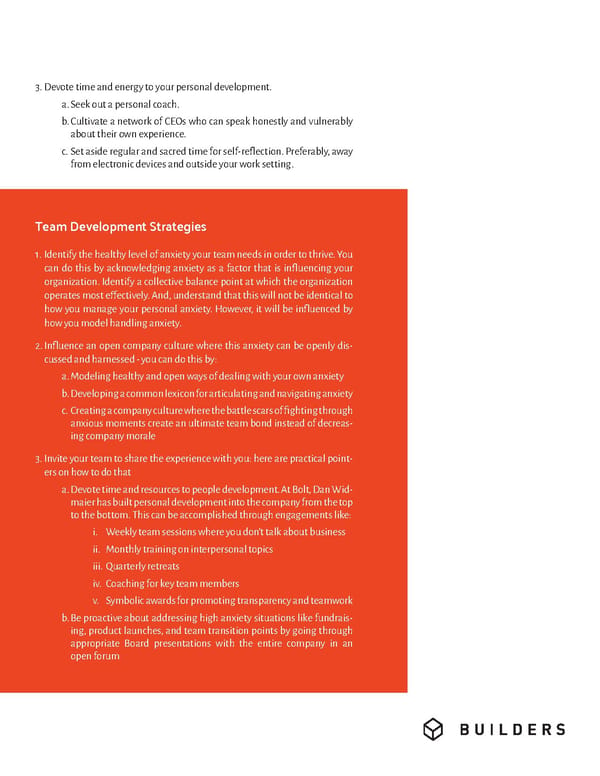3. Devote time and energy to your personal development. a. Seek out a personal coach. b. Cultivate a network of CEOs who can speak honestly and vulnerably about their own experience. c. Set aside regular and sacred time for self-reflection. Preferably, away from electronic devices and outside your work setting. Team Development Strategies 1. Identify the healthy level of anxiety your team needs in order to thrive. You can do this by acknowledging anxiety as a factor that is influencing your organization. Identify a collective balance point at which the organization operates most effectively. And, understand that this will not be identical to how you manage your personal anxiety. However, it will be influenced by how you model handling anxiety. 2. Influence an open company culture where this anxiety can be openly dis- cussed and harnessed - you can do this by: a. Modeling healthy and open ways of dealing with your own anxiety b. Developing a common lexicon for articulating and navigating anxiety c. Creating a company culture where the battle scars of fighting through anxious moments create an ultimate team bond instead of decreas- ing company morale 3. Invite your team to share the experience with you: here are practical point- ers on how to do that a. Devote time and resources to people development. At Bolt, Dan Wid- maier has built personal development into the company from the top to the bottom. This can be accomplished through engagements like: i. Weekly team sessions where you don’t talk about business ii. Monthly training on interpersonal topics iii. Quarterly retreats iv. Coaching for key team members v. Symbolic awards for promoting transparency and teamwork b. Be proactive about addressing high anxiety situations like fundrais- ing, product launches, and team transition points by going through appropriate Board presentations with the entire company in an open forum
 Healthy Stress - Unlocking The Power Of Anxiety Page 4 Page 6
Healthy Stress - Unlocking The Power Of Anxiety Page 4 Page 6